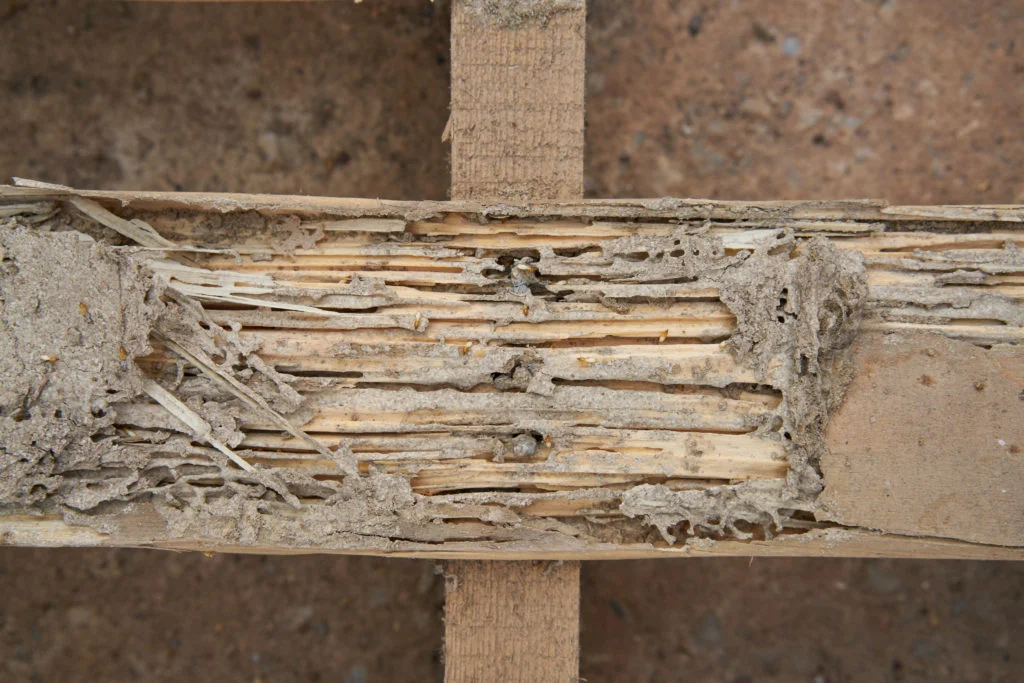Carpenter Ant or Termite Infestation?
Nobody likes to share their food with insects – we built homes to keep them out. Unfortunately, there are insects that want to consume your home as well. Seeing something suspicious quickly raises the question of whether it is a carpenter ant or termite infestation.
Carpenter Ant vs Termite
There are several ways to distinguish between carpenter ants and termites. Depending on what evidence you are presented with, you can identify the culprit by:
- insect body
- discarded wings
- damaged wood
- frass appearance
Insect Body
At first glance, their bodies have similarities, but they are quite different. The differences key to correct identification can be observed by the naked eye and without having to contact the invader.
Wings
Both termites and carpenter ants may send out winged swarmers, but the wings on the two are different. Ants have front wings that are longer than the rear wings while termites have wings of equal length.
Generally speaking, termites aren’t as likely to be seen as ants. Termites tend to stay in voids, nests, tunnels, etc. where moisture levels can be consistent. You are most likely to see a termite in the case of swarming.
Antennae
Ants have elbowed antennae, but termite antennae are straight. They may still curve, but they will not have the sharp-elbowed bend that is evident in ants.
Body
Ants have 3 distinct body segments due to a narrow waist. This is not the case for termites. Their broad waist gives the appearance of a long body and head.
Detached Wings
In some cases, you may come across wings separated from the bodies. Once a termite lands after swarming, the wings are no longer needed. If you come across the wings alone, you can still have a chance at determining which left them. If it was an ant, the wings will have some different lengths. Termites will have two pairs of uniform length wings.
The wood

While both termites and carpenter ants may damage wood, their motivations differ vastly. Termites will consume the wood, but carpenter ants cannot digest wood. They are simply excavators removing softened wood (typically softened from moisture and/or rot) to make room for a nest and traveling tunnels. Carpenter ant tunnels in the wood will be smooth and polished. Termites eat the cellulose fibers in wood that protozoa an bacteria in their gut can break down. Carpenter ants may have entrance and exit holes, but termites will plug holes up with mud.
Frass
If you see a pile of shavings with bits of an insect in it, this is most likely from a carpenter ant. The insects are present because it is their food source. Termites leave behind more uniform pellets as they digest the wood. If you are seeing a gathering of pellets of the same shape and size, it is more likely to be termites.
Carpenter Ant or Termite Infestation? Get The Gurus!
Whether you are concerned about identifying curious piles, want to eliminate what you know is there, or simply want help keeping things out, Rove Pest Control is here to help. Contact Rove today to schedule a consultation, inspection, or treatment.
